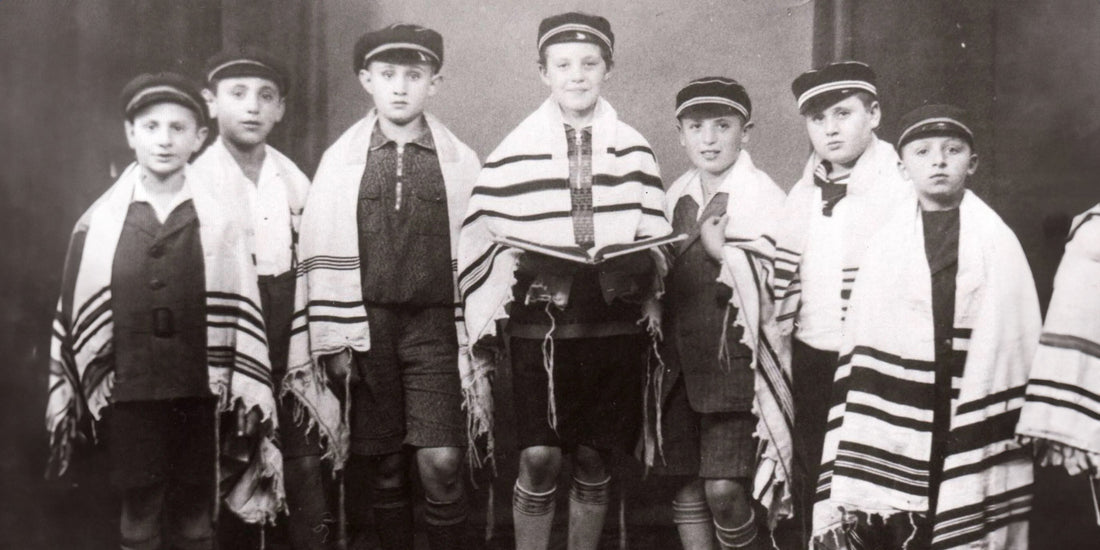
What are tzitzit or tzizyot?
Tzitzit (singular) or tzizyot (plural) or 'fringes' are ritual fringes or tassels attached to the four corners of a tallit (prayer shawl) or a tallit katan (a smaller garment) and worn by Jewish men.
These fringes are more than just a physical decoration in Jewish tradition. They are a deep symbol of faith, a physical reminder of the commandments given by God in the Torah and a practice that has existed for thousands of years.
origin
The commandment Wearing tzitzit comes from the Torah, from the book of Numbers 15:37-41:
"The Lord said to Moses, 'Speak to the Israelites and say to them: Throughout all generations you shall make tassels on the corners of your garments, with a thread of blue on each tassel. So you will remember all the commandments of the Lord to do them and not prostitute yourselves by following the desires of your own hearts and eyes. Then you will remember to obey all my commandments, and you will be holy to your God.'"
This biblical instruction makes Tzitzit is a tangible reminder of the divine commandments, intended to remind the wearer of his obligations to God.

Design and symbolism
A set Tzitzit consists of four fringes attached to the corners of a garment, such as a tallit gadol (a large prayer shawl) or a tallit katan (a smaller, often undershirt-like garment). Each fringe consists of several threads, usually eight, knotted and wrapped in a specific pattern. Traditionally, one of these threads was dyed blue with a dye known as tekhelet, which comes from a specific type of sea snail.

The intricate design of Tzitzit has a symbolic meaning:
The number of knots and turns: The knots and turns are traditionally arranged in a pattern which, together with the numerical value of the word “ Tzitzit ” results in a total of 613. This number represents the totality of the commandments (mitzvot) in the Torah.
Tekhelet: The blue thread, which is not always present today due to historical interruptions in the availability of the dye, symbolizes heaven and the throne of God and serves as an additional spiritual reminder.

Religious and cultural practice
Daily clothing
Many observant Jewish men wear a tallit katan under their regular clothing throughout the day. This practice serves as a constant, personal reminder of their faith and religious obligations.
In liberal Judaism , there are now movements in which women also wear the tallit.
prayer
During morning prayer, men wear the Tallit Gadol. This larger prayer shawl is usually decorated with more elaborate Tzitzit is often worn over the shoulders. The act of putting on the tallit is accompanied by a blessing that underscores the garment's sacred role.
Important events in your life
Tziyot play a role in important life cycle events, such as the bar mitzvah, where a young Jewish boy receives his first tallit gadol, marking his entry into religious adulthood. An Orthodox Jew is even buried in his prayer shawl after death. However, the tzitzyot are removed as a sign that a dead person no longer has any commandments to follow.

Spiritual meaning
Tzijot have a complex spiritual meaning:
Reminder of commandments
The primary purpose of tzitzit is to remind the wearer of God's commandments. Seeing and touching the fringes invites one to reflect on one's actions and align them with one's spiritual and ethical obligations.
Symbol of Jewish identity
Tziyot are a visible symbol of Jewish identity and commitment to the Torah. Wearing them publicly can be an expression of pride in one's heritage and faith.
Spiritual discipline
The daily discipline of Wearing tzitzit promotes mindfulness and a sense of responsibility and encourages wearers to live a life of holiness and integrity.

Wearing Tzitzit Today
Nowadays, wearing Tzitzit still has a deep meaning. With the revival of tekhelet dye, more Jews are incorporating the blue thread into their Zizijot and thus continue an old tradition. Furthermore, the discussions about the Tzit has also been extended to gender-specific aspects, as some women prefer wearing the They consider tzizyot as a personal expression of their faith and observance of the commandments.
Tziyot are much more than just fringes on a garment; they are a woven tapestry of faith, identity, and tradition. Through their daily wear, they offer a constant, tangible connection to Jewish heritage and spiritual practice. As a historical and contemporary symbol, the Tzijot continues to remind the Jewish people of their permanent covenant with God.
